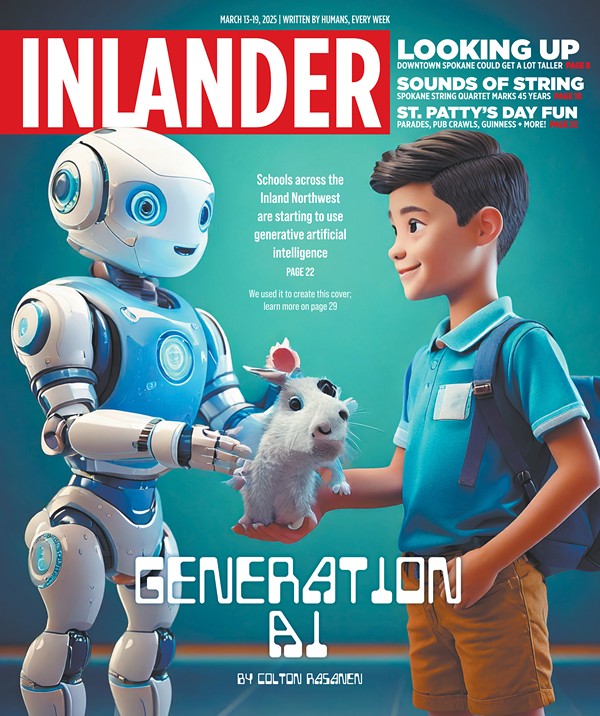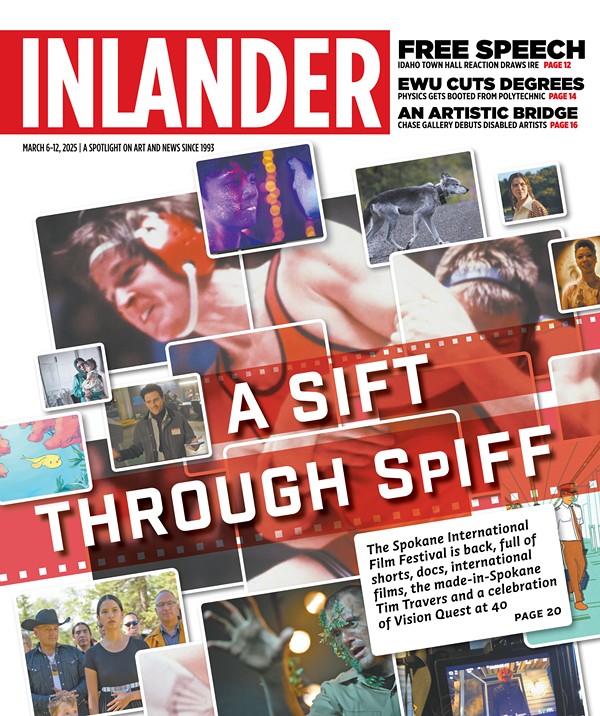Artist Rick Bartow's new show, currently on display at the MAC, begins with a small, haunting surprise. The moment viewers veer into gallery, immediately after they almost unconsciously pass the first painting and approach the second, they're not alone. They're being watched by a hawk, poised on a tiny, primitive piece of paper.
The painting is the first picture in Bartow's show "My Eye," and given Bartow's propensity to deliver large, dramatic fields of color on equally expansive canvasses, the small hawk deserves some attention. It's a clever, telling start to the exhibit; with Bartow's art, viewers can look, but they are also under scrutiny.
Populating Bartow's works around the MAC's gallery is an extensive menagerie of creatures both real and imagined, figures from cultures alive and mythical, and colors drawn from the most vivid shades of nature. They hang on Bartow's hand-made paper canvasses, and gaze from the sculpted eyes of the various figures that round out the exhibit. They are compelling both in the way that they invite speculation ("What kind of a bird is that?" "What culture is this from?") and in their gently asserted presence. Bartow's figures are undeniably alive, or at least captured vividly from life, and due to that, the exhibit resembles a society as much as it does a group of artworks.
The weakest pieces in the show are a number of large pastel works that Bartow has done on fine hand-made paper. These are free, giving range to a variety of subjects: hand traces, face sketches, silhouettes. At their best, these pastels are two-dimensional, fluid totem poles that trace the artist's preoccupations. At their worst, they resemble enormous sketch pages, some of them more complete than others. They often use mixed-media, incorporating natural pigments in addition to the handcrafted quality of the paper. But their placement on such large, traditional pages confines them and weakens the bold cultural eclecticism that characterizes the rest of the show.
Most impressive in "My Eye" is a mixed-media painting entitled Big Lotso that shows a frog spattered with colors and covered with graffiti. Even though no explicit cultural references are made, it's clear that Bartow is drawing on the mythologies, histories and materials of various native civilizations from around the globe. Bartow seems not to be trying to duplicate the work so much as he is bringing these different approaches to art together. The result can seem eclectic -- like the large pastels -- or it can coalesce with an impact similar to indigenous art.
Bartow, who lives in Newport, Ore., is at his best when he unites the honest diversity of his ideas with his materials. The 3D objects in the show, which range from creepy dolls to a crucifix-referencing triptych to an exquisitely carved salmon mask, are easily the most open, most direct, most integrated pieces in the show. It's as though Bartow needed to draw on the random eclecticism of sculpting with various materials to make sense out of the diverse cultural traditions he's working into his art.
The result is often disturbing in the best sort of way. Among the recognizable animal figures are less familiar, almost nightmarish images. A small head looking like a wooden sock riddled with nails is named "Quee Queg." The figure "After Van Gogh" unleashes a one-eared scream to heaven. An entire table in the middle of the room has dreamlike animal shapes constructed from wood and presented as strange toys. And "Fool II" is a tortured man in a dunce cap looking like something from a more primitive A Clockwork Orange. It's the kind of stuff you'd expect to find in the basement of either a wise man or a serial killer.
Much of this is due to the fidelity with which Bartow seems to work. Rather than worrying about copying the cultural traditions he is mining, Bartow freely interprets, referencing anything he needs to achieve his desired effect without ever being bound by the original ideas, images, materials and cultures. Each work sincerely confronts this diversity of influences that ranges from the potent spiritual images of Native American art to the saturated colors of Jewish painter Marc Chagall to western commercial art. But there is a sense of having worked through all of those ideas, of having become the endings of those traditions and the beginnings of another. Piece by piece, Bartow has made his own culture in "My Eye," and it is watching.
Publication date: 07/15/04
















